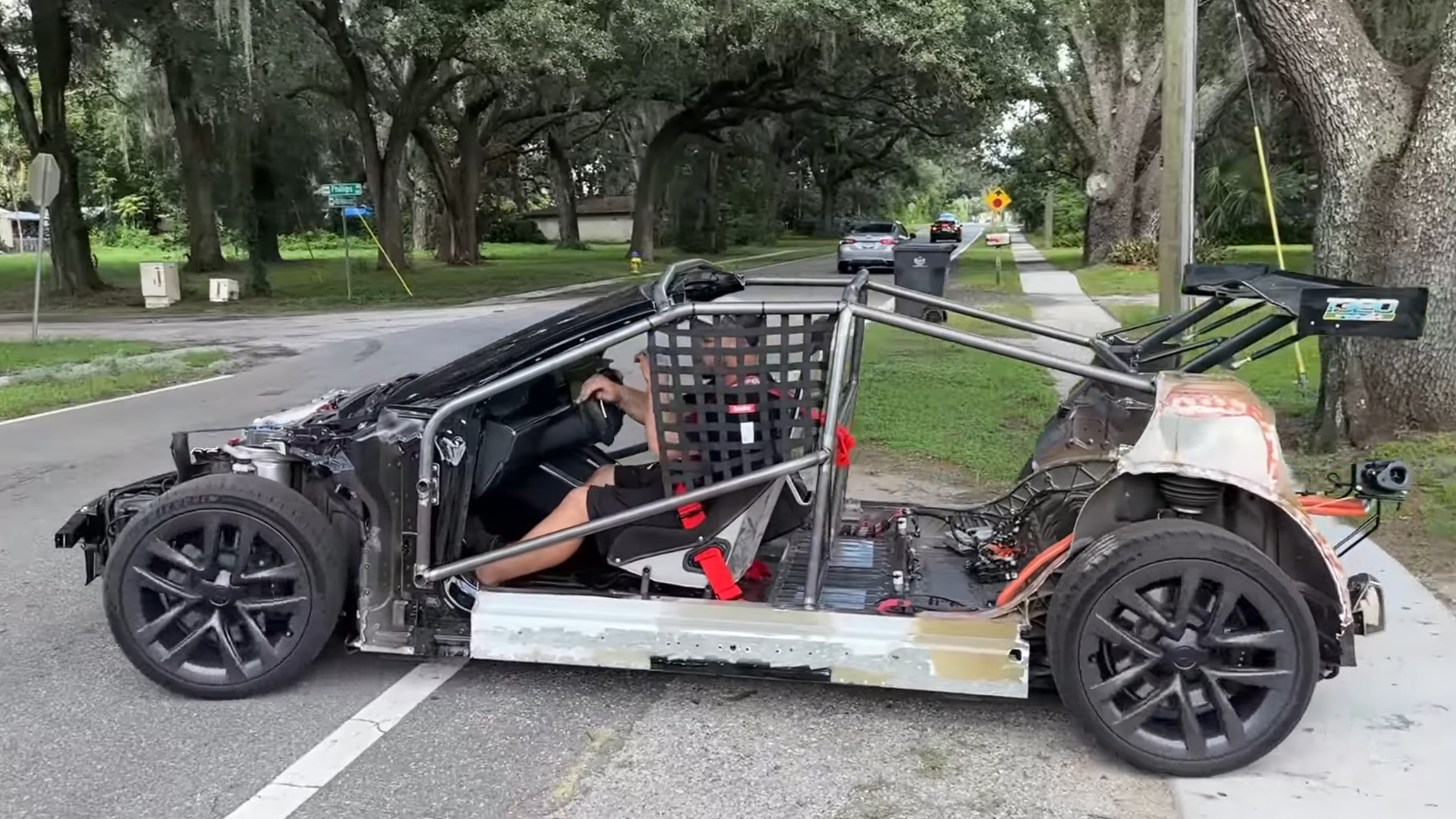

Say what you want about EVs, but there’s no denying just how addicting that neck-snapping torque and near-instant acceleration can be. That’s one of the reasons that Kyle Wade—who goes by the name BoostedBoiz on YouTube—jumped at the opportunity to purchase a wrecked Tesla Model S Plaid from Copart for $60,000, almost half of the car’s original price of $108,490.
Like most car enthusiasts, Wade simply couldn’t leave the Tesla alone. Instead of some minor tweaks, the YouTuber decided to turn the 1,020 horsepower super sedan into a stripped-down exocet capable of destroying just about anything on the drag strip.

The car had been rear-ended, but otherwise was in fairly good condition—no surprise given the high cost of repairing a crashed Tesla and that insurance companies often total EVs for even the slightest notion of battery damage. Kyle then bought another Model S shell as a parts donor, stripping the rear end off and then fixing it onto the original crashed Plaid.
The Plaid is quick, that’s a known fact. It can do zero to 60 mph in 1.99 seconds, though the fastest that Wade could achieve in real-world conditions was 2.31 seconds. That’s still no slouch, of course, especially for a car that tips the scale at 4,745 pounds.
Wade insisted on pushing the limits of the Model S Plaid and making it even faster, so he did the easiest, most cost-effective thing he possibly could: lose weight. After removing the doors and the interior, he managed to shave 700 pounds off the car, giving it a final weight of around 4,040 pounds.
Surprisingly, reducing the vehicle’s weight actually had a negative effect on the street. The car struggled to get traction, worsening its zero-to-60 sprint to 2.35 seconds. According to Wade, the car did feel quicker on the top end, though. Perhaps he had simply reached the limitations of the stock factory Michelin Pilot Sport 4S tires.

Next, it was time to take it up a notch and break out the sawzall to chop some extra weight off the car. Surprisingly, cutting off the rest of the car’s body didn’t reduce the vehicle’s weight that much more. Removing the glass roof, glass rear windows, rear quarter panels, steel B pillars, as well as the rest of the aluminum body brought the weight down just another 190 pounds (87 of which was in the glass roof alone).
The final really speaks to how hefty EV batreally are. The car (without a cage and additional structural reinforcements) clocked in at a whopping 3,850 pounds.

It took Wade four days to create the Cyber Kart. By the end, it had received a structural cage and weighed 895 pounds less than it did from the factory. And without any other modifications, he decided that it was time to test out his new creation at the track.
The Model S Plaid first ran a 9.33-second quarter-mile at 148 mph. After a few runs heat up the tires and battery, the Cyber Kart was able to make the same quarter-mile run in 8.83 seconds at 149.43 mph. It also managed to cut the zero-to-60 sprint down to just 1.87 seconds. For context, that’s about as fast as the $2.5-million Rimac Nevera, but with about half the horsepower.

Wade believes further improvements could be made given the abysmal difference in top speed due to poor aerodynamics. After all, no front bumper, hood, or doors on the car introduce extra drag.
I think the coolest thing about this isn’t the fact that Wade built an exocar, but that he did it with an EV. Hell, any EV would have made this a neat project (just like we’ve seen in the past), especially since EV adoption is in its infancy, but doing so with a Tesla Model S Plaid made it that much cooler.
Got a tip or question for the author? Contact them directly: rob@thedrive.com